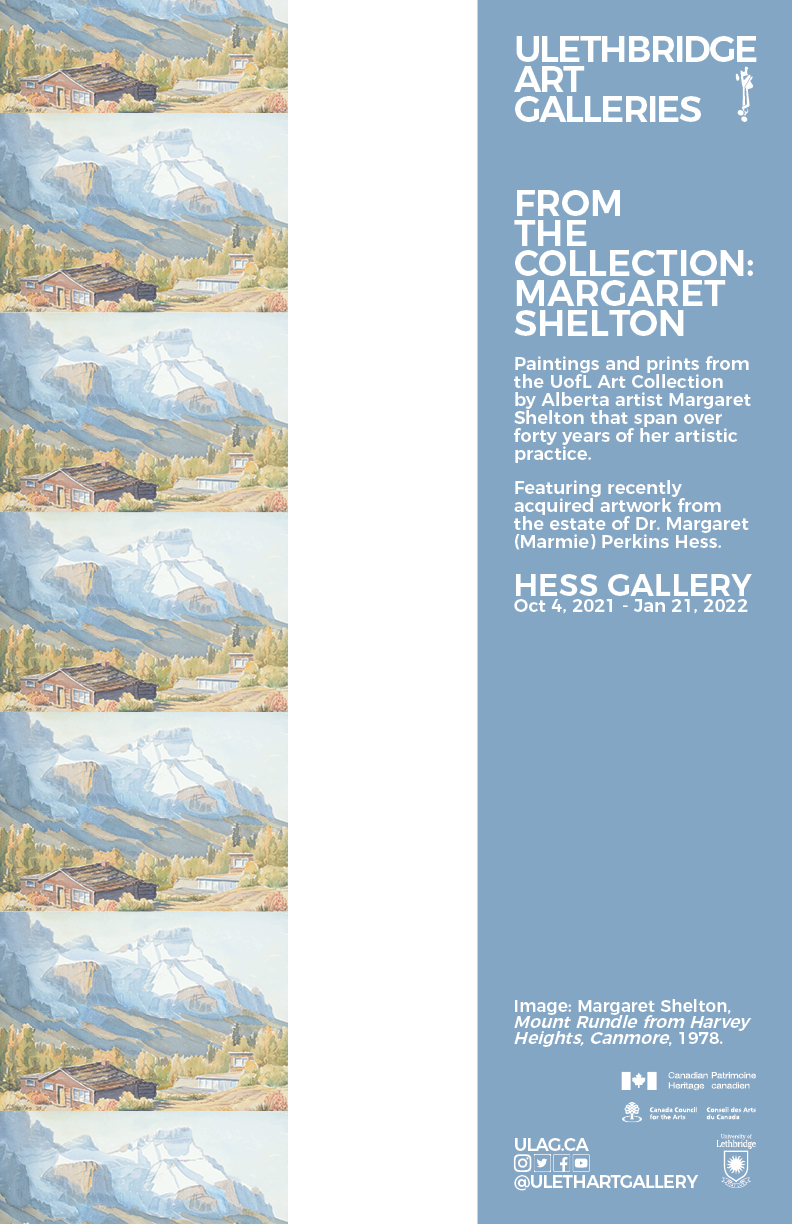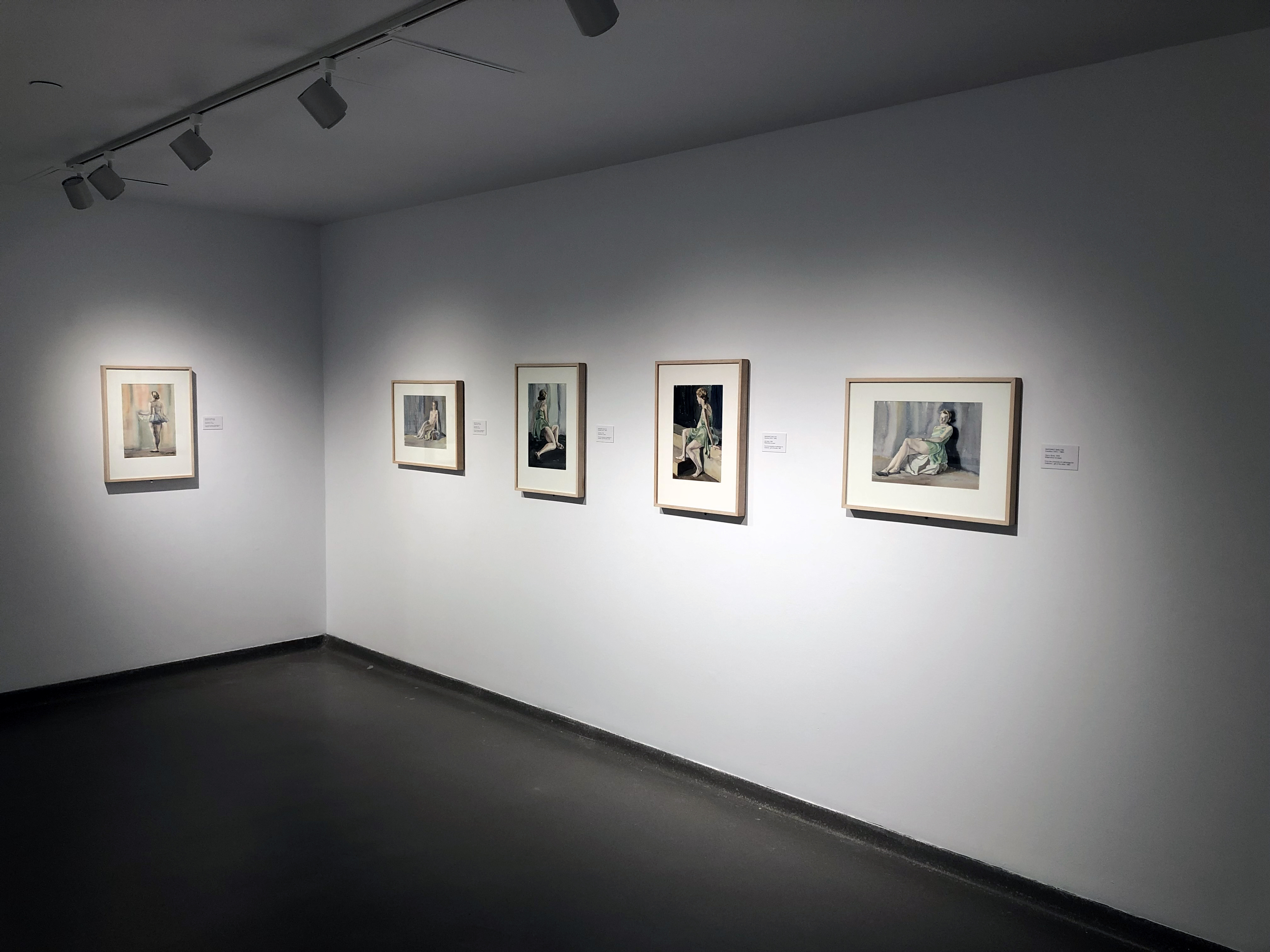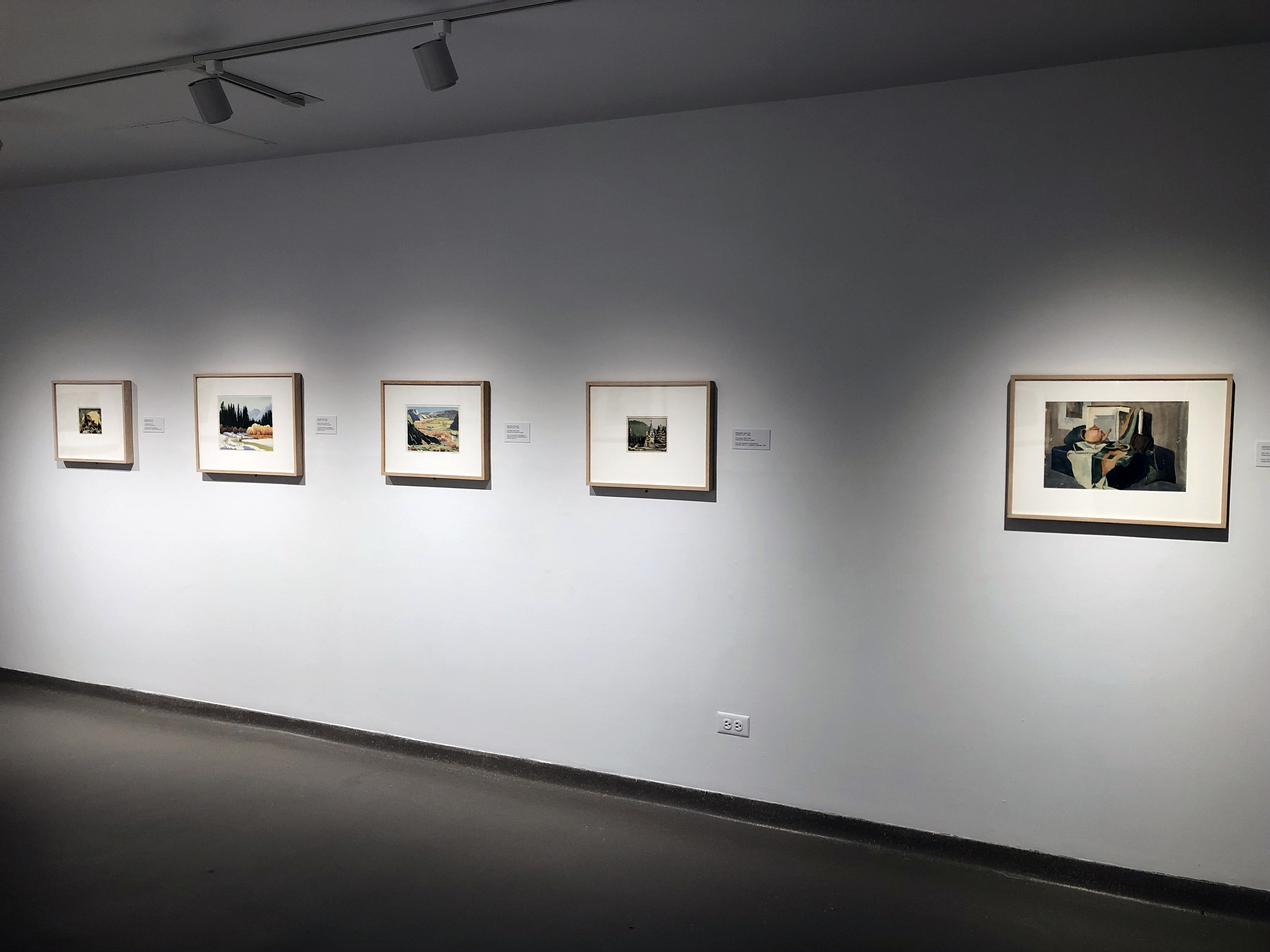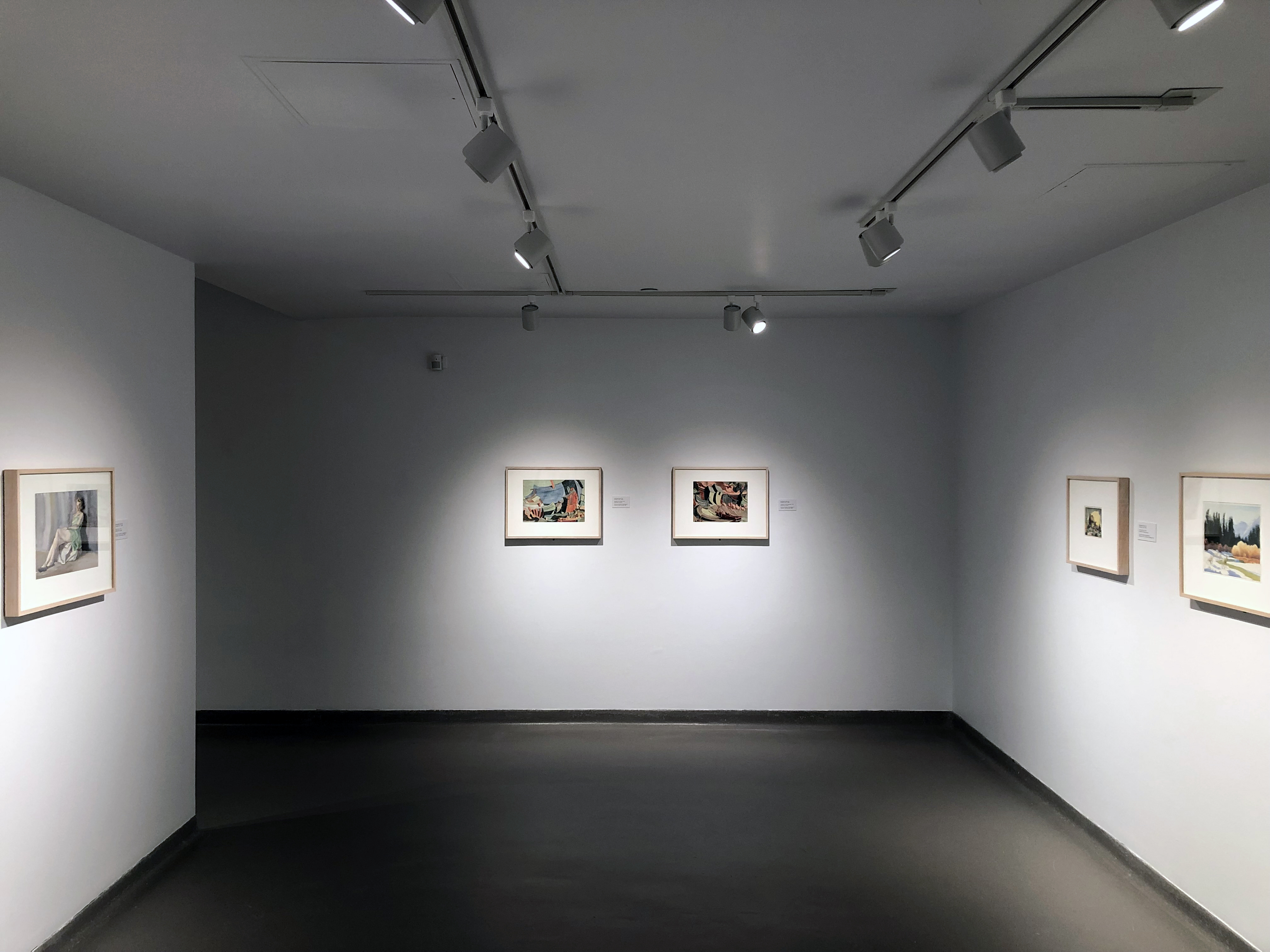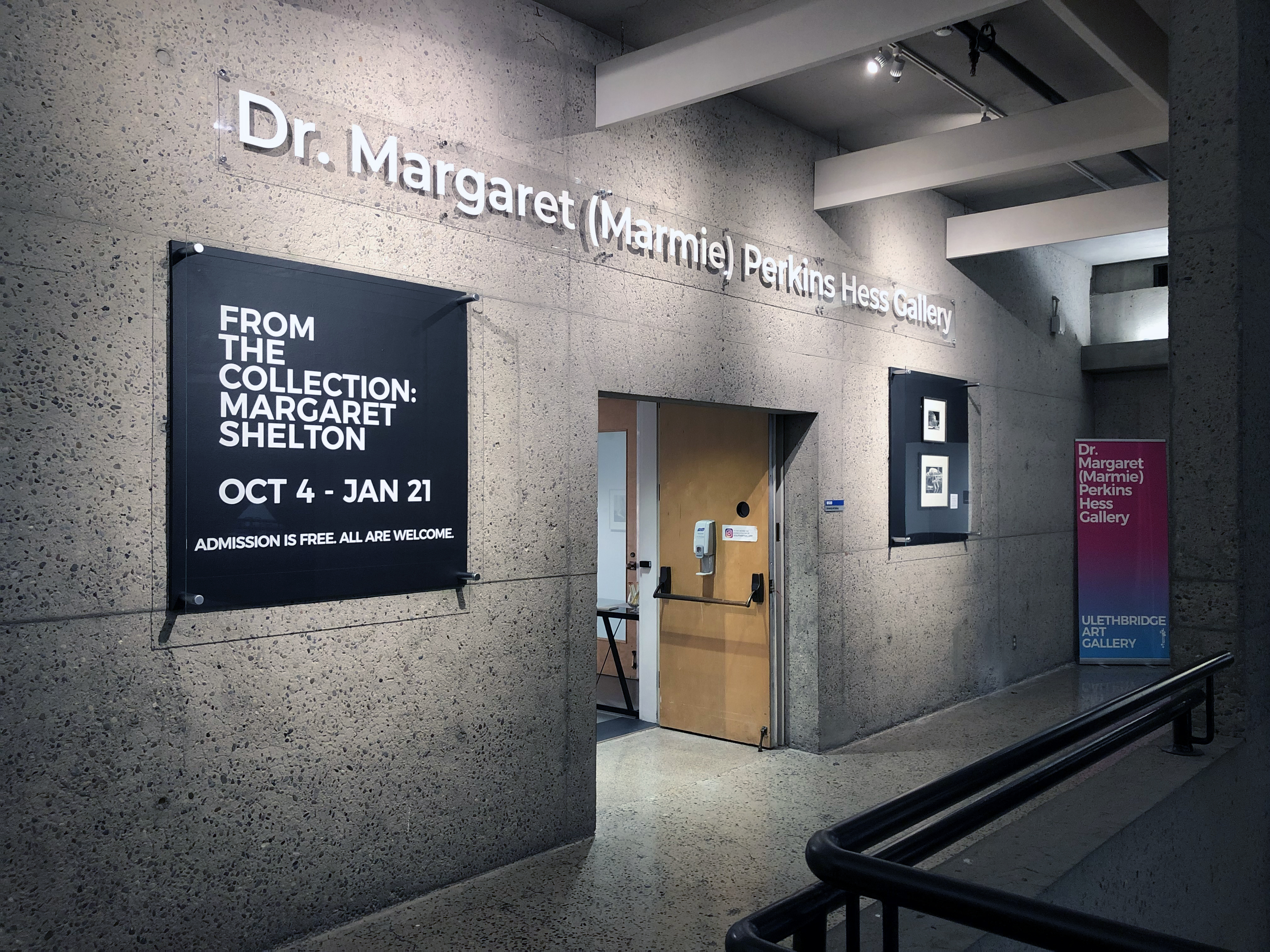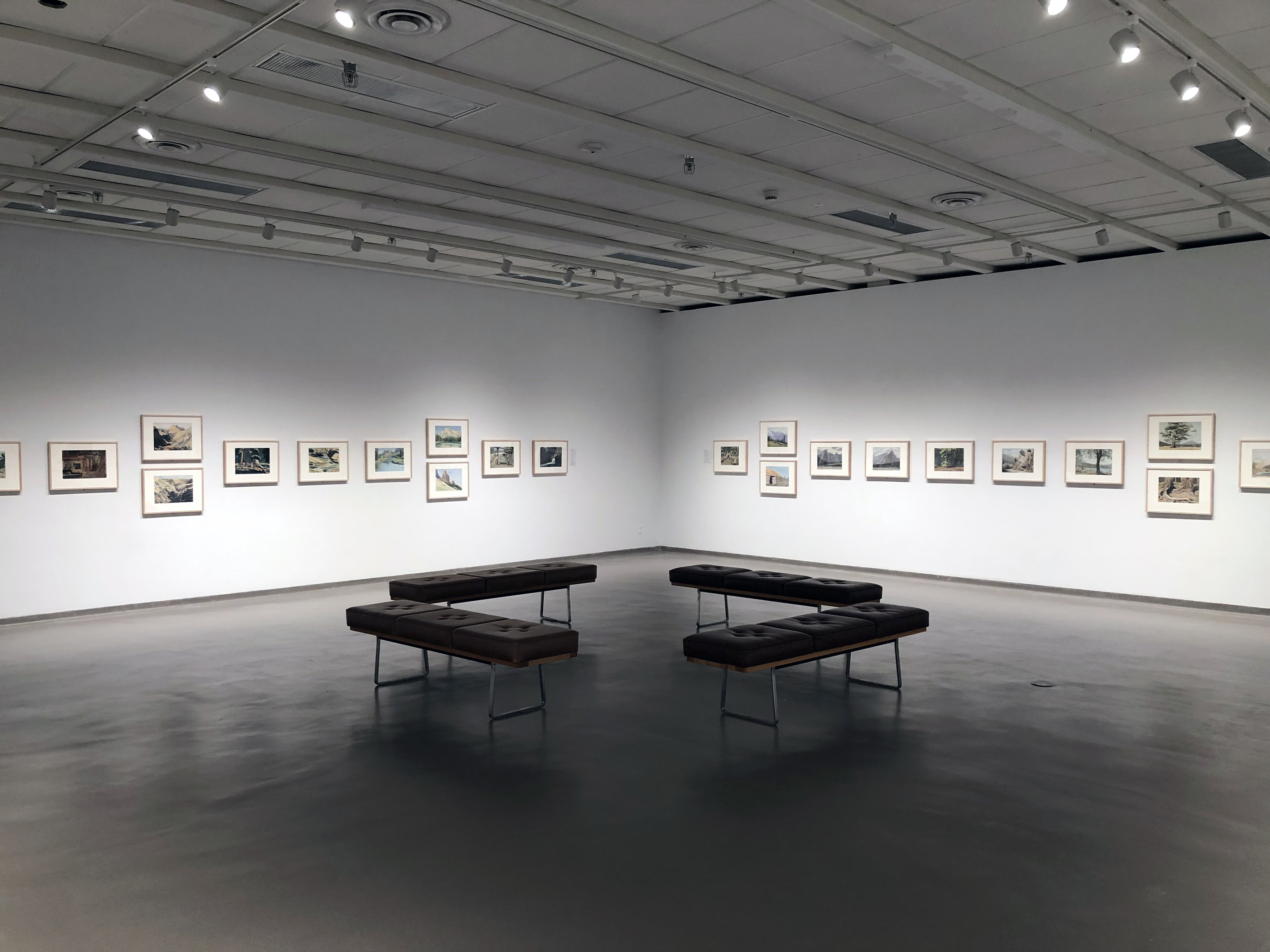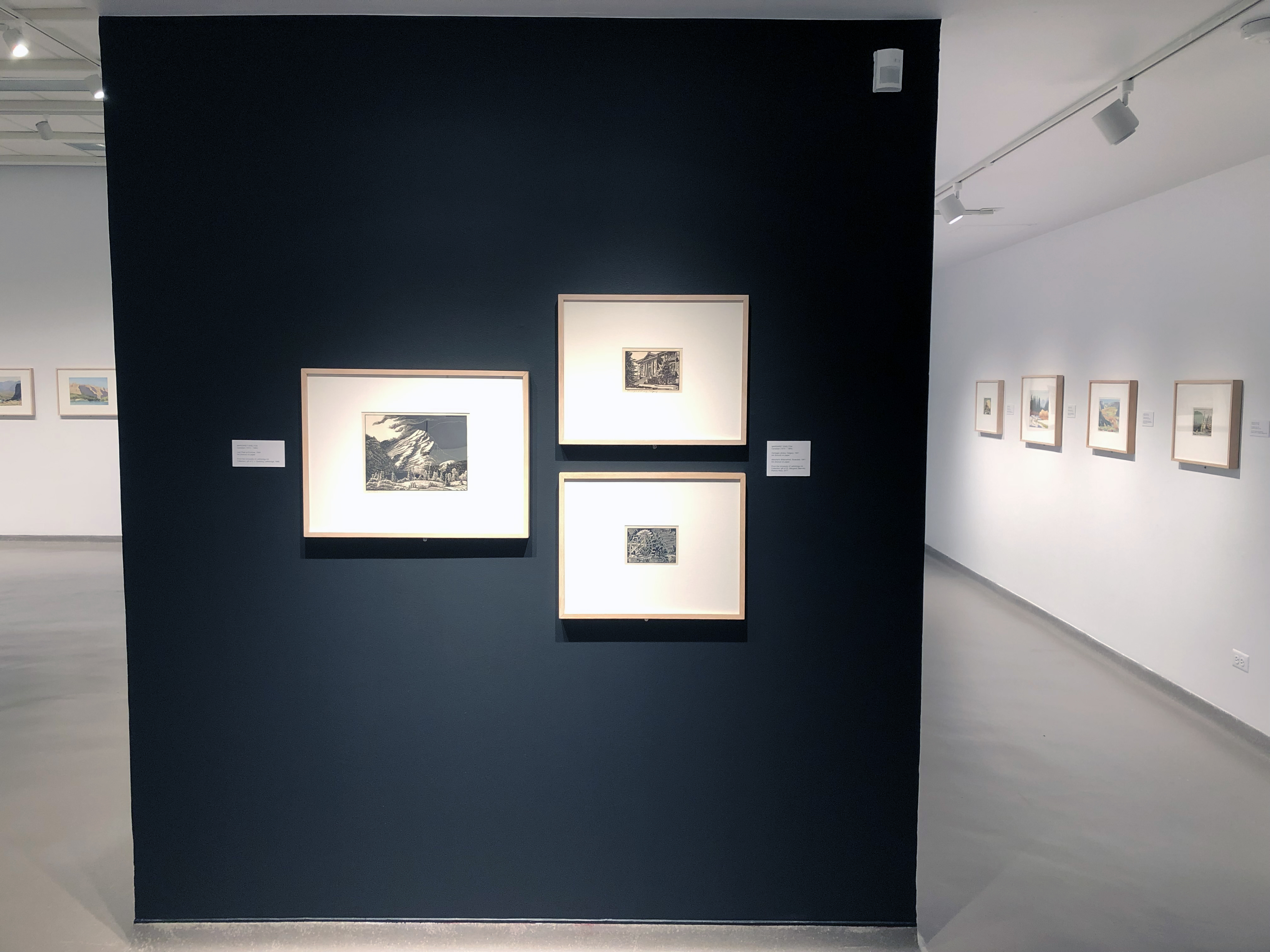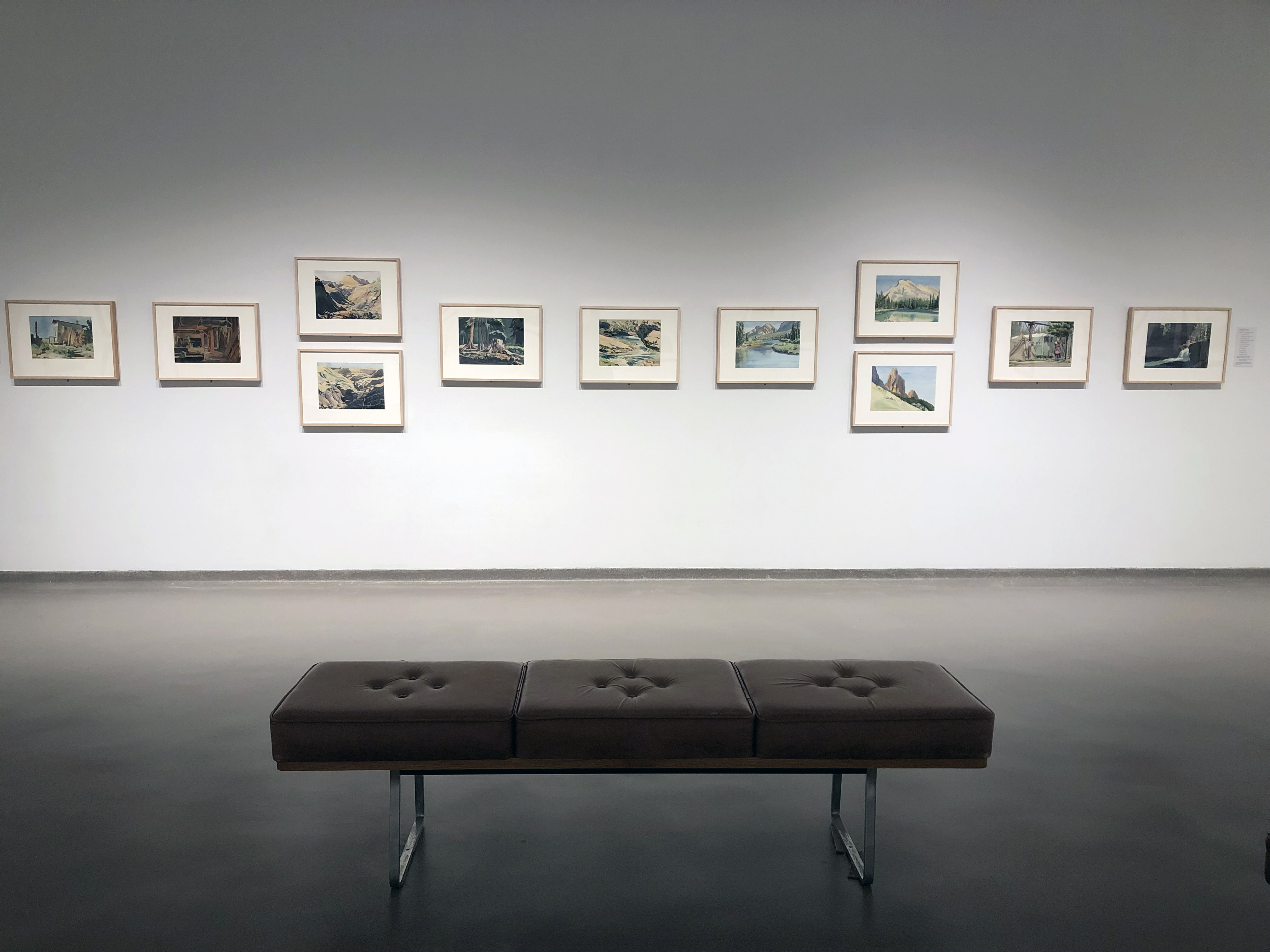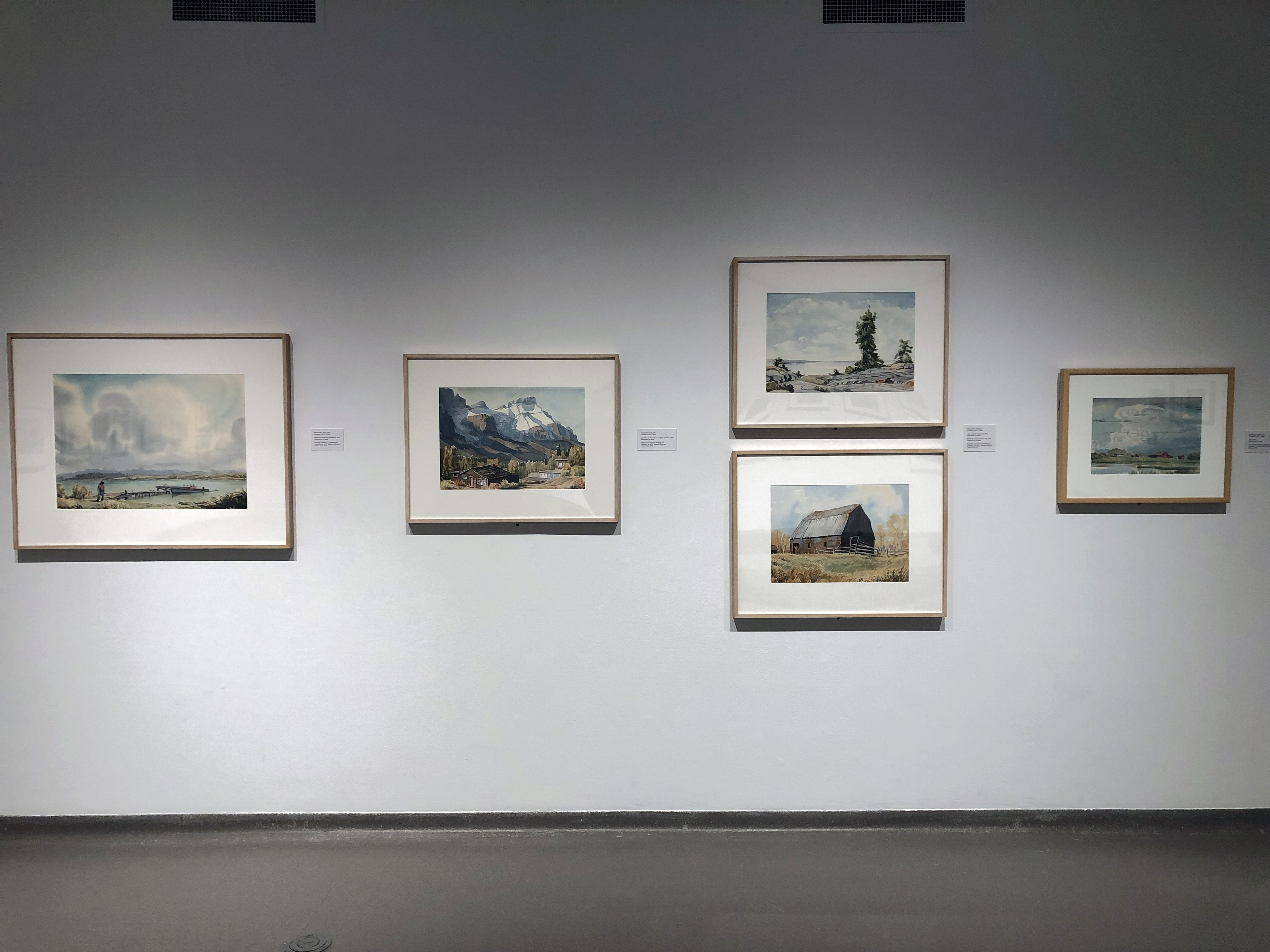Dr. Margaret (Marmie) Perkins Hess Gallery
October 4, 2021 – January 21, 2022
From the Collection: Margaret Shelton
Paintings and prints from the UofL Art Collection by Alberta artist Margaret Shelton that span over forty years of her artistic practice.
Featuring recently acquired artwork from the estate of Dr. Margaret (Marmie) Perkins Hess.
Curated by David Smith.
Curatorial Statment:
“Art is a way of life before it is a means of earning a living; and though the latter can be an everlasting nuisance, the former, with all the advantages that nature offers us here, is an everlasting joy.”[1] – Margaret Shelton
Margaret Shelton was born in 1915 and grew up in the Drumheller valley in South Central Alberta near Rosedale. Today she is best remembered for her work in watercolour and block prints but she also worked occasionally in oil paint, supported her family by doing leathercraft, and in her later years took up pastels. Her preferred method of painting outdoors, en plein air, was enabled by her fondness for tenting and cycling. She would spend many summers outside and once took the train to Vancouver with a plan to cycle back, stopping along the way to sketch and paint. Her trip was, however, cut short after an accident in Revelstoke.[2] Her adventurous and independent spirit took her all over the province and she would later come to be referred to as “Alberta’s Emily Carr”.[3]
In 1933 Shelton was working towards her teaching certificate at Normal School in Calgary and was encouraged to take evening art classes at the Provincial Institute of Technology and Art (now SAIT and AUArts). After completing her certificate, she enrolled full time in Fine Arts at the Institute and studied under A.C. Leighton and later H.G. Glyde and Walter Phillips. From each of her teachers she absorbed different concerns and techniques that would inform her practice.[4] Leighton’s attention to the accuracy of line and colour can be seen in Shelton’s work Mount Rundle from Harvey Heights, Canmore, 1978 where the careful underdrawing provides a structure for the harmonious range of tones used overtop. Glyde’s instruction in block printing techniques and his interest in social realism are perhaps most evident here in Ideal Mine Tipple, Wayne, (reprinted in 1975 but first printed in 1940). Perhaps an unusual choice of subject matter, it is significant that the artist focuses our attention on an industrial site which implies both labour and livelihood at a time when Canada was just coming out of the Great Depression and jobs had been hard to come by. Walter Phillips built on her knowledge of printmaking by teaching her the colour woodcut from the Japanese method which he is credited with popularizing in Canada in the interwar period. In the woodcut Massive Range, Banff, 1943 Shelton uses more primary colours than is typical of Phillips, but the gradation of colour in the sky and delicate planes of flat colour on the mountain are evidence that she learned a great deal from him. Shelton used the knowledge she acquired from these strong mentors to synthesize her own distinct style which she would adhere to consistently for her entire career.
Most of the watercolours in this exhibition were part of a collection of fifty paintings spanning thirty years (1937 – 1967) that were donated by Margaret Shelton herself in 1982, the same year she was diagnosed with cancer and just two years before her passing. In subsequent years, the body of Shelton’s work at the UofL was fleshed out by the addition of her linocut and woodcut prints in both black and colour inks. In 2017, the bequest by Dr. Margaret (Marmie) Hess added thirteen more works by Shelton including five prints used on her handmade cards which can be seen in the Helen Christou Gallery in the exhibition titled “Seasons Greetings” (October 8 – January 14th, 2022). The Hess bequest also contained three later watercolours from the 1970s which are notable for their larger format.
Shelton’s shift to pastel work in her final years resulted in a body of work quite different in tone than anything created earlier. The moody scenes are charged with emotion and perhaps reflect a longing to be outside again.[5] Although her pastels are not represented in the university’s collection, they close a chapter in the life of one of Alberta’s most prolific artists of the 20th Century. Shelton passed away in 1984 at the age of 69 after a career that spanned half a century of artmaking spent primarily in Alberta.
David Smith
Preparator / Assistant Curator
[1] Shelton, Margaret. “Art in Alberta.” The New Trail 2, no. 3 (July 1944): 106.
[2] Heather McCoy “Beaten Bicycle Tells the Story of Beloved Alberta Artist Margaret Shelton” Calgary Herald, September 16, 2021 https://margaretshelton.ca/calgary-herald-article.
[3] Amber Bowerman, “Margaret Shelton (1915 – 1984),” Galleries West, 2008, p. 98.
[4] Marcia Johnson, “Margaret Shelton” Galleries West, 2003, p. .
[5] Bowerman, p.98.
